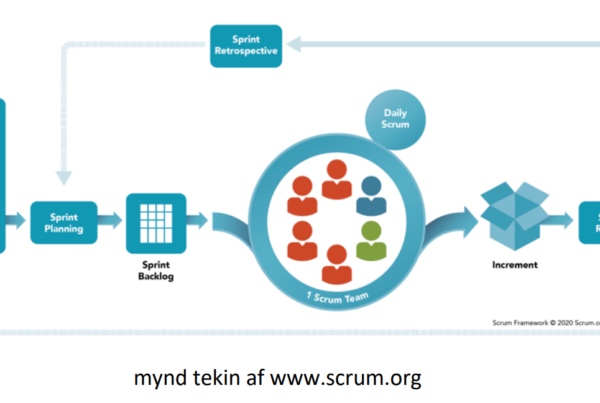How do we actually use data, and how important is it for the future of Norwegian companies? Here’s what you need to know to get started.
What do you think of when you hear the word data ? Figures and information. Computer, maybe?
Data can make your business more profitable, efficient and attractive – whether you are an electrician, baker or run a multinational company. Data is about putting together information to improve your own business and your own products. It can be the key to innovation, increased competitiveness and growth. The most valuable companies today are data-driven.
But what exactly is data? What does it mean to use it – and how do you get started?
- Digital Norway has its own guide for using data: Discover the possibilities for your company!
This is data
Marianne Jansson Bjerkman is the cluster leader in Cluster for Applied AI , which is facilitated by Smart Innovation Norway. Among other things, she works with building networks to help Norwegian companies develop and use technology that creates value for data.
– Data is simply information in the form of facts and statistics that are collected from various sources. This can be numerical quantities, or data of a more qualitative nature. Data forms the basis for sharing knowledge and information between people, she says.
Ok. So data is something that contains information that can be stored, shared and put into a system. Obviously useful for a business! But what exactly does it mean in a business context?
Helge Dahl-Jørgensen in DigitalNorway works to facilitate that Norwegian companies can access and utilize data for business development and new value creation. New exciting opportunities can arise, for example, when a company is able to combine data from its own business with relevant external data sources.
He says that to see the possibilities, it can be useful to sort the data the company has access to, into two categories: internal and external.
– A company generates a lot of its own data. It is, among other things, in your customer systems, in the logistics systems, in production systems and in systems the company uses together with its customers and suppliers. You collect data all the time!
External data can be data provided by private actors or available public data Examples of some public data used in several different industries are map data, weather data and traffic data.
– Map data and traffic data can, for example, be used to find efficient delivery routes. Location data can tell you something about when potential customers and users are in specific places. Is it sunny tomorrow? Then maybe the bakery and sandwich company have to set up production, says Dahl-Jørgensen.
What is data?
- Data is information that is made available so that it can be read and interpreted by machines and humans.
- All companies have internal data. It can be data about things like sales, purchasing, inventory, marketing channels, finances, customers, transportation, equipment, processes and suppliers.
- External public data can be map data, weather data, traffic data, and company data, and data from other open registers. This is information that can be used to make your business more efficient, attractive and profitable.
How to use data to create value
Marianne Jansson Bjerkman says that it is only when you combine data from different sources, that new contexts and patterns reveal themselves and form the basis for insight and good decisions.
In practice, this becomes a calculation task, with an X (customer data) and a Y (product data) which together give a profitable final answer. Fortunately, we do not have to do the math even when it gets too complicated:
– As people, we are well accustomed to combining information and seeing patterns and connections. We are actually “programmed” for that! But when the datasets become large, we do not always reach for them, and more powerful analysis tools such as machine learning and artificial intelligence come in here, Bjerkman adds.



